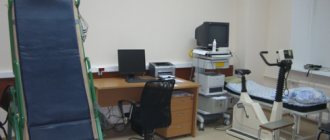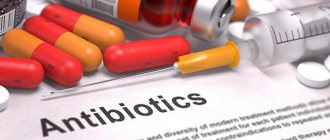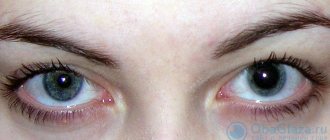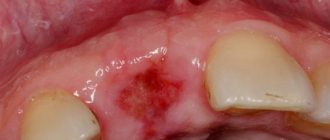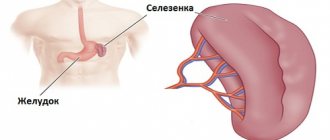Pathological processes of the central nervous system are represented by ischemic, degenerative, inflammatory, neoplastic and other disorders.
Deviations are usually dangerous. This is due to the limited space inside the skull. And on the other hand, the incredible “gluttony” of nerve tissue. They are one of the main consumers of oxygen and nutrients for their functioning.
Fainting is an acute, short-term disturbance of cerebral circulation that leads to a sudden loss of consciousness. Unlike a stroke, an eating disorder occurs spontaneously and suddenly, lasting a matter of seconds. Therefore, no pronounced degenerative processes are observed, everything remains relatively normal. But the symptoms are clearly visible.
In general, fainting is not a disease. This is just a sign of some deviation from the norm. However, ICD-10 has a separate code for syncope - R55.
The disorder occurs as a result of acute ischemia, and what it may be associated with must be carefully clarified during diagnosis. Neurologists work with patients. The rest of the doctors are on an as-needed basis, if the clinical situation allows it.
Etiology[ | ]
Fainting may be a symptom of an underlying disease. There are a large number of pathological conditions accompanied by the formation of fainting (here is an incomplete list of diseases that can cause fainting):
- diseases accompanied by a decrease in cardiac output - cardiac arrhythmias, stenosis of the aorta or pulmonary arteries, myocardial infarction, angina attacks
- conditions accompanied by a violation of the nervous regulation of blood vessels - for example, fainting when swallowing, when quickly rising from a horizontal position
- states of low oxygen content in the blood - hypoxia and other blood diseases, anemia at altitude in thin air or in stuffy rooms
First aid
Sequence of actions in case of fainting:
- Place the victim in a horizontal position on a flat, hard surface on his back (if the body position is not natural after fainting);
- Give an elevated position to the lower extremities by placing a pillow, a backpack or simply rolled up outerwear under them (if these things are not available, ask for help or hold your legs up on your own);
- Free your neck and chest from constricting clothing by unbuttoning tight collars and top buttons on shirts and blouses;
- Provide an influx of fresh air by opening windows, doors, or taking the victim out into the fresh air;
- Spray the victim's face with cold water;
- Let the cotton wool with ammonia be sniffed, rubbing the temples, behind the ears, vigorously rubbing the earlobes.
- A special massage will also come to the aid of a sick person. Providing assistance consists of massaging the fingertips on the hands and massaging certain points. One of them is located under the nasal septum, the other is in the center of the fold under the lower lip.
- After regaining consciousness, give the person strong, sweet tea.
If the patient does not regain consciousness, then it is necessary to exclude traumatic brain injury (if there was a fall) or other causes of temporary loss of consciousness. Call an ambulance.
You should never:
- Immediately after fainting, sit the person down. This may lead to another episode of fainting.
- Leaving a person alone and trying to run for help. It is better to call an ambulance by phone and take the necessary pre-medical measures until the doctor arrives.
- Immediately after a fainting episode, give the person any medications to increase blood pressure or others without a prescription from an emergency doctor.
- Letting a person go home alone unaccompanied, even if the person assures that he feels great.
- Allow a person to drive a car.
- Hit, slap on the cheeks.
To prevent repeated attacks during neurogenic fainting, you should give up bad habits and eat a balanced, rational diet. Physical activity is moderate. You should get into the habit of daily walks in the fresh air, at least 1.5-2 hours. Swimming lessons, special exercises on an inclined table, hardening, massage of the head and neck-neck area are recommended. In case of stress fainting, emotional stability should be increased and the state of the autonomic nervous system should be normalized. Traditional medicine recommends brewing teas based on the herbs of mint, lemon balm, and valerian. Sometimes psychotherapy sessions and hypnosis are required.
In patients with symptomatic syncope, therapeutic measures are aimed at treating the diseases that are the causes of syncope, for example, eliminating arrhythmia.
We recommend watching a video describing the necessary pre-medical actions for both adults and children
Source: fireman.club
Clinical manifestations[ | ]
The clinic of fainting was first described by Aretaeus from Cappadocia.
Clinical manifestations depend on the type of syncope. Loss of consciousness may be preceded by a state of lightheadedness, nausea, blurred vision or flashing “spots” before the eyes, or ringing in the ears. Weakness occurs, sometimes yawning, sometimes the legs give way and there is a feeling of impending loss of consciousness. Patients turn pale and sweat. People with fair skin may still have a slight blush on their face. After this, the patient loses consciousness. The skin is ashen-gray, blood pressure drops sharply, and heart sounds are difficult to hear. The pulse can be extremely rare or, on the contrary, frequent, but thread-like and barely palpable. The muscles are sharply relaxed, neurological reflexes are not detected or are sharply reduced. The pupils are dilated and there is a decrease in their reaction to light. The duration of fainting is from several seconds to several minutes - usually 1-2 minutes. At the height of fainting, convulsive attacks and involuntary urination may develop.
Temporary loss of consciousness - fainting
Fainting is a temporary loss of consciousness.
Fainting is caused by a temporary loss of blood supply to the brain and may be a sign of a more serious condition.
People of any age can faint, but older people may have more serious causes.
The most common causes of fainting are vasovagal (a sharp decrease in heart rate and blood pressure) and heart disease.
In most cases, the cause of fainting is unknown.
Subscribe to our INSTAGRAM account!
Pediatrics[3][ | ]
Fainting as a short-term loss of consciousness is especially characteristic of adolescence and puberty. Girls are more likely to faint. The average age of fainting is 10-12 years. Fainting is rare in children under 5 years of age.
The most common causes are neurocardiogenic, but fainting may be a harbinger of sudden death caused by arrhythmia, aortic duct obstruction, and other cardiovascular events. The following categories of fainting are distinguished:
- neurocardiogenic (vasovagal syncope)
- loss of consciousness due to a sudden drop in cardiac output
- loss of consciousness not associated with a sudden drop in cardiac output
Causes of fainting:
- loss of consciousness due to a sudden drop in cardiac output
tachyarrhythmia supraventricular tachycardia - ventricular paroxysmal tachycardia
- second or third degree heart block
- hypertrophic cardiomyopathy
- acquired coronary heart disease Kawasaki syndrome
- intramural coronary artery
- dilated cardiomyopathy
- Viral or idiopathic myocarditis
- orthostatic hypotension
For vasovagal syncope
There is a prodromal period, which is characterized by the following symptoms: dizziness, visual disturbances, nausea and sweating. Fainting can occur after a long standing position, also with a sudden transition from a lying or sitting position to a standing position. Another form of central nervous system-mediated fainting is the situation of fainting during hair care, which is usually observed in girls when combing or blow-drying their hair. Fainting while urinating can occur at any age, although it is most common in the late teens. Fainting during urination usually occurs at night, when the child urinates after waking up from sleep, when there is a change in position from a lying position to a standing position. Fainting can also occur during affective-respiratory attacks, which is a childhood form of nervous syncope when the heart slows down.
Loss of consciousness due to a sudden drop in cardiac output
usually not preceded by a prodromal period. The main cause of such fainting is arrhythmia and obstruction of the left ventricular outflow tract. Patients may complain of palpitations, pain or heaviness in the chest. Loss of consciousness due to a sudden drop in cardiac output usually occurs during physical activity and may be accompanied by a complete loss of muscle tone in the body.
An epileptic seizure has a long period of return - the post-seizure period. During this period, witnesses to the seizure may describe the patient's state as semi-conscious, after which a period of weakness begins.
Clinical examination[ | ]
Blood pressure should be assessed to determine hypotension and hypovolemia. Cardiac examination should include palpation of the chest to determine the points of greatest tremors of the chest and auscultation to determine the intensity of heart sounds, the presence of murmurs and other clinically important sounds. Iron levels in blood tests may be low in patients with nervous syncope.
Every patient who experiences syncope should be examined with an ECG. As a result, the following may be identified: long QT syndrome, WPW (Wolff-Parkinson-White) syndrome, which cannot be identified during clinical examination.
First aid
Sequence of actions in case of fainting:
- Place the victim in a horizontal position on a flat, hard surface on his back (if the body position is not natural after fainting);
- Give an elevated position to the lower extremities by placing a pillow, a backpack or simply rolled up outerwear under them (if these things are not available, ask for help or hold your legs up on your own);
- Free your neck and chest from constricting clothing by unbuttoning tight collars and top buttons on shirts and blouses;
- Provide an influx of fresh air by opening windows, doors, or taking the victim out into the fresh air;
- Spray the victim's face with cold water;
- Let the cotton wool with ammonia be sniffed, rubbing the temples, behind the ears, vigorously rubbing the earlobes.
- A special massage will also come to the aid of a sick person. Providing assistance consists of massaging the fingertips on the hands and massaging certain points. One of them is located under the nasal septum, the other is in the center of the fold under the lower lip.
- After regaining consciousness, give the person strong, sweet tea.
If the patient does not regain consciousness, then it is necessary to exclude traumatic brain injury (if there was a fall) or other causes of temporary loss of consciousness. Call an ambulance.
You should never:
- Immediately after fainting, sit the person down. This may lead to another episode of fainting.
- Leaving a person alone and trying to run for help. It is better to call an ambulance by phone and take the necessary pre-medical measures until the doctor arrives.
- Immediately after a fainting episode, give the person any medications to increase blood pressure or others without a prescription from an emergency doctor.
- Letting a person go home alone unaccompanied, even if the person assures that he feels great.
- Allow a person to drive a car.
- Hit, slap on the cheeks.
To prevent repeated attacks during neurogenic fainting, you should give up bad habits and eat a balanced, rational diet. Physical activity is moderate. You should get into the habit of daily walks in the fresh air, at least 1.5-2 hours. Swimming lessons, special exercises on an inclined table, hardening, massage of the head and neck-neck area are recommended. In case of stress fainting, emotional stability should be increased and the state of the autonomic nervous system should be normalized. Traditional medicine recommends brewing teas based on the herbs of mint, lemon balm, and valerian. Sometimes psychotherapy sessions and hypnosis are required.
In patients with symptomatic syncope, therapeutic measures are aimed at treating the diseases that are the causes of syncope, for example, eliminating arrhythmia.
We recommend watching a video describing the necessary pre-medical actions for both adults and children
Source: fireman.club
Help[ | ]
Help for fainting depends on the cause. If vasovagal syncope occurs repeatedly, fluid intake and salt intake should be increased. Fludrocortisone and mineralocorticoid are the most commonly used drugs for vasovagal syncope, although their effectiveness has not been fully established. Beta-blockers (propranolol, atenolol), vagolytic drugs (disopyramide), centrally acting agents (imipramine, fluoxetine) are also used.
Anticonvulsants are recommended for patients with epileptic syncope.
Symptoms of fainting
Losing consciousness is an obvious sign of fainting.
Vasovagal syncope. Before fainting, a person may feel light-headed; blurred vision will be noted. A person may see “spots before the eyes.”
The patient experiences pallor, dilated pupils, and sweating.
While unconscious, a person may have a low heart rate (less than 60 beats per minute).
The person must quickly regain consciousness. Many people do not have any warning signs before fainting.
Situational fainting. Consciousness returns very quickly when the situation passes.
Orthostatic syncope. Before an episode of fainting, a person may notice blood loss (black stools, heavy periods) or fluid loss (vomiting, diarrhea, fever). The person may also experience delusions. Observers may also note paleness, sweating, or signs of dehydration (dry lips and tongue).
Cardiac syncope. The person may report palpitations, chest pain, or shortness of breath. Observers may note the patient's weakness, irregular pulse, pallor, or sweating. Fainting often occurs without warning or after exertion.


